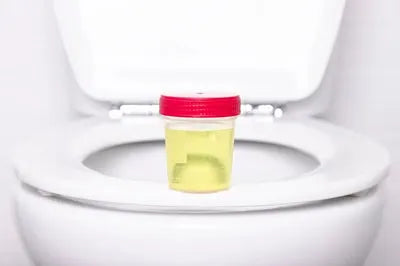Ever found yourself wincing from discomfort while urinating and wondering, "What’s causing this pain, and how do I fix it?"
One reason for the discomfort could be uric acid crystals. These crystals can lead to symptoms like burning during urination or cloudy, dark urine, making you question what’s happening inside your body.
To ease your concerns, let's address some common questions you might have.
The normal range for uric acid in urine usually falls between 250 and 750 milligrams daily. When levels exceed this range, crystals can form. What causes these crystals? They develop when there’s too much uric acid in your body, often due to diet, dehydration, or other health conditions.
But is the condition treatable?
Yes, it is. The time it will take to resolve the issue varies from person to person. With the right uric acid crystals in urine treatment, including staying hydrated and adjusting your diet, many find relief within a few weeks to a few months.
Let’s understand more about uric acid crystals in urine in this blog.
Uric Acid Crystals in Urine Symptoms
If you have uric acid crystals in your urine, you might experience a few noticeable symptoms. It's important to recognise these so you can take steps towards healing and recovery. Here are some uric acid crystals in urine symptoms you might encounter:
-
Discomfort or Pain:
You could feel a burning sensation or pain during urination. It’s a common symptom when uric acid crystals are present in urine. -
Frequent Urination
An increased urge to urinate more often than usual may occur. This happens as your body tries to flush out the excess uric acid crystals in urine. Friends Adult Diapers offer comfort and protection, helping you manage these frequent urges with confidence and ease. -
Cloudy or Dark Urine:
Your urine might look cloudy or darker in colour. This can be a sign of the crystals affecting the clarity of your urine. -
Pain in the Lower Abdomen:
Some people experience pain in the lower abdomen or back, which can be linked to the presence of these crystals. -
Mild Fever or Chills:
In some cases, a mild fever or chills might accompany the discomfort, indicating the presence of uric acid crystals.
It’s important to know that uric acid crystals in urine are usually manageable, but keeping an eye on these symptoms is crucial. Remember that high levels of uric acid could also cause incontinence. So, if you’re concerned, it’s best to consult with a healthcare provider for a diagnosis and appropriate uric acid crystals in urine treatment.
Uric Acid Crystals in Urine Treatment
Dealing with uric acid crystals in urine can be tough, but don’t worry - there are ways to manage and treat them effectively. Here’s a simple guide to help you deal with it:
-
Stay Hydrated:
Drinking plenty of water is crucial. It helps flush out the uric acid crystals in the urine, reducing discomfort and supporting overall kidney function. Aim for 8-10 glasses a day. -
Adjust Your Diet:
Reducing foods high in purines, like red meats and shellfish, can help lower uric acid levels. Opt for a balanced diet rich in fruits, vegetables, and whole grains instead. -
Medication:
Sometimes, medication may be needed to manage uric acid levels. Your healthcare provider might prescribe something to help dissolve the crystals or reduce their formation. -
Avoid Sugary Drinks:
Cutting down on sugary beverages, especially those high in fructose, can help lower uric acid levels. Water or herbal teas are great alternatives. -
Exercise Regularly:
Engaging in regular physical activity helps maintain a healthy weight, which can contribute to keeping uric acid levels in check. Aim for moderate exercise most days of the week.
By incorporating these steps, you can better manage uric acid crystals in the urine and improve your overall comfort. Remember, you’re not alone in this—seeking support from your healthcare provider is a great way to find the best treatment plan for you.
Conclusion
Dealing with uric acid crystals in urine can be challenging, but you’ve got this. By staying hydrated, adjusting your diet, and working with your healthcare provider, you can manage the symptoms and reduce the crystals effectively. It might take a bit of time, but with patience and the right approach, you’ll start feeling better.
FAQs
How do you treat uric acid crystals in urine?
To treat uric acid crystals, drink plenty of water to flush them out. Treating uric acid crystals also involves reducing purine-rich foods, managing weight, and using medications. Read through the blog to get detailed insights.
What is the fastest way to dissolve uric acid crystals?
Staying hydrated, drinking water, and drinking herbal teas are the quickest ways to dissolve uric acid crystals. Your doctor might recommend specific medications or treatments to speed up the process.
Are uric acid crystals in urine painful?
Yes, uric acid crystals in urine can cause discomfort or pain. This may feel like a burning sensation during urination.
How can I reduce uric acid in my urine naturally?
To naturally reduce uric acid, focus on a balanced diet, drinking plenty of water, and avoiding high-purine foods. Regular exercise and maintaining a healthy weight can also be beneficial.
What foods cause uric acid in urine?
Foods high in purines, like red meat, shellfish, and sugary drinks, can raise uric acid levels. Reducing these can help manage and prevent the buildup of uric acid crystals.
















